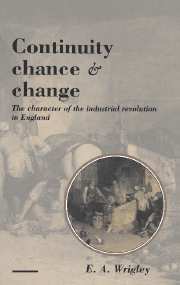4 - Numbers and notions
Published online by Cambridge University Press: 05 June 2012
Summary
In her recent study of poverty, Himmelfarb wrote that the industrial revolution was ‘presumably reflected’ in the Wealth of nations, adding that the effect of Adam Smith's great book, ‘was to give technology and industry a new and decisive role not only in the economy but in society. The division of labour … became the harbinger of a social revolution as momentous as anything dreamed of by political reformers and revolutionaries.’ The fact that these remarks were not central to the main theme of her argument enhances their value for my purposes. They may be taken to represent a common view of the nature of the key analytic concept to be used in apprehending the industrial revolution, and of its significance in the writings of contemporary economists, of whom Adam Smith, frequently depicted as the most authoritative and articulate advocate of the capitalist system, was the most weighty.
The thinking that lies behind the view Himmelfarb expressed has several characteristic components. Proximately, economic advance occurs because increased market size permits specialization of function and hence rising productivity per head. The process also involves, and indeed is conditional upon, better transport facilities and more sophisticated commercial methods and financial instruments. It induces urban growth and more effective integration of settlements of all sizes into an articulated urban hierarchy.
- Type
- Chapter
- Information
- Continuity, Chance and ChangeThe Character of the Industrial Revolution in England, pp. 98 - 132Publisher: Cambridge University PressPrint publication year: 1988



